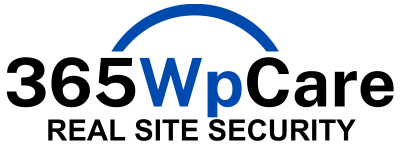WordPress has established itself as one of the most popular content management systems, powering millions of websites worldwide. However, its popularity also makes it a prime target for cybercriminals seeking to exploit vulnerabilities. Understanding the common WordPress security vulnerabilities and knowing how to address them is crucial to ensuring the safety of your website and its visitors. In this article, we’ll delve into some of the most prevalent vulnerabilities and provide actionable steps to fix them.
1. Outdated Software and Plugins: Running outdated versions of WordPress core, themes, and plugins is a significant security risk. Hackers often target known vulnerabilities in older versions.
Solution: Regularly update your WordPress installation, themes, and plugins to the latest versions. Enable automatic updates whenever possible, and remove any unused plugins or themes to minimize potential attack vectors.
2. Weak Passwords: Using weak or easily guessable passwords can expose your website to brute force attacks, where hackers repeatedly try different passwords to gain unauthorized access.
Solution: Enforce strong password policies for all user accounts. Utilize a combination of uppercase and lowercase letters, numbers, and special characters. Additionally, encourage users to employ password managers to generate and store complex passwords securely.
3. Insufficient User Permissions: Granting excessive permissions to users, especially those who don’t require administrative access, increases the risk of unauthorized changes to your website.
Solution: Assign user roles with the least privileges necessary for their tasks. Regularly review and update user permissions as roles change within your organization.
4. Cross-Site Scripting (XSS): XSS vulnerabilities allow attackers to inject malicious scripts into your website, which can then be executed on the browsers of your visitors, potentially compromising their data.
Solution: Sanitize user inputs by using security libraries or functions provided by WordPress. Implement Content Security Policies (CSPs) to restrict the execution of scripts from unauthorized sources.
5. SQL Injection Attacks: Improperly sanitized inputs in your website’s forms and queries can lead to SQL injection attacks, enabling attackers to manipulate your database.
Solution: Utilize prepared statements and parameterized queries to prevent attackers from injecting malicious SQL code. Ensure that all user inputs are validated and sanitized before interacting with the database.
6. File Upload Vulnerabilities: Allowing users to upload files without proper validation can lead to the execution of malicious scripts.
Solution: Limit the types of files that can be uploaded. Store uploaded files outside of the web root directory, ensuring they can’t be executed.
7. Insecure Themes and Plugins: Using poorly coded or unsupported themes and plugins can introduce vulnerabilities to your website.
Solution: Only download themes and plugins from reputable sources like the WordPress.org repository. Regularly update and maintain your themes and plugins, and remove any that are no longer in use.
Conclusion: WordPress security vulnerabilities are a reality, but by staying informed and taking proactive measures, you can significantly reduce the risk of falling victim to attacks. Regular updates, strong passwords, careful user permission management, code validation, and cautious plugin and theme selection all contribute to a more secure WordPress website. By adopting a security-first mindset, you’ll be able to provide a safe online experience for both yourself and your website visitors.

